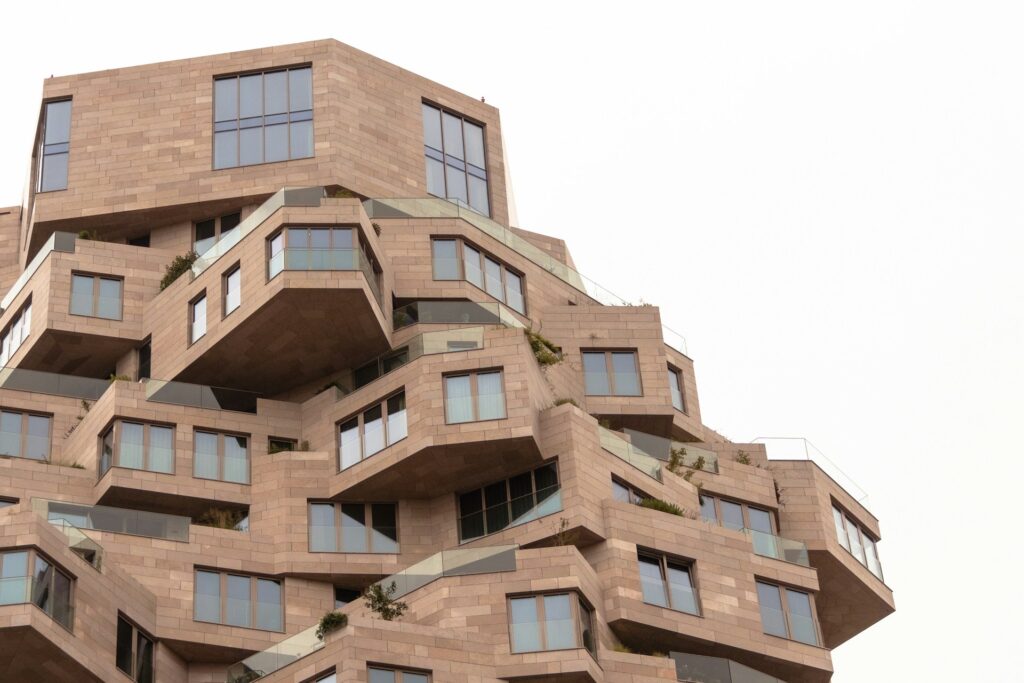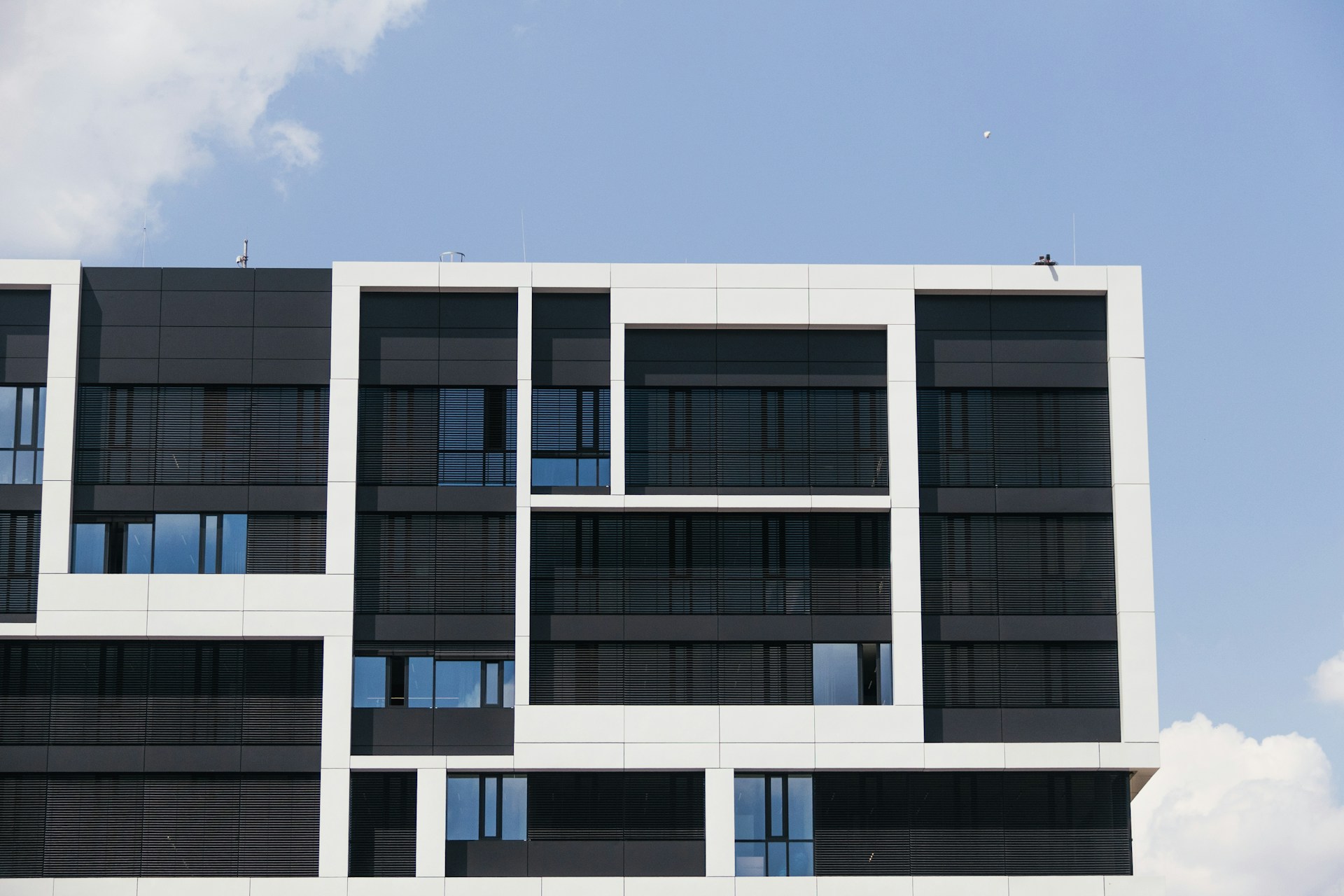Innovative Affordable Housing Solutions – Addressing the Housing Crisis
Of all the proposed innovative affordable housing solutions, prefabricated structures are among the most viable.
Modular construction implies assembling elements of a building in another location, then transporting them to the main site in order to install them there.
The utilization of this method also shortens construction duration and cost, hence proper utilization recommended by the World Bank could be a solution to the housing deficit.
1. Prefabricated Housing: Quick, Cost-Effective, and Scalable
One of the best approaches for innovative affordable housing solutions that seems to hold a lot of hope towards providing affordable houses is the prefabricated structures.
Prefabrication means forming the different portions of the building in other areas and then just putting them up on the construction site.
It also introduced a method that greatly enhances the rate at which homes are built hence fulfilling the requirement of the housing shortage gap.
Speed and Efficiency
The construction of prefab homes can take a fraction of the time as that taken in the construction of the conventional houses.
In time-starved country where housing deficit is increasing at alarming rate, this speed is imperative.
Due to Urban planning there are emerging demands for houses that can only be put up in large quantities and are beyond the capacity of traditional construction.
Cost-Effectiveness
Due to its ability to cut down on labor and materials that would have been used in construction, prefab comes out as quite cheap when it comes to the construction of affordable housing units.
Since most of the construction is done off-site, the structural frames can be sold at a cheaper price since they can be afforded by the low income earners.
Environmental Benefits
Affordable and comfortable houses can also be a result of prefabricated construction, alongside with sustainability.
Manufacturing control enables the use of environmentally friendly raw materials and other energy-efficient construction techniques resulting in reduced impacts on the environment.
Especially for the country where environmental issues are increasingly demanding.

2. Incremental Housing: Building in Phases
Another hybrid model that has now emerged is that of incremental housing.
It makes it possible for families of this bracket to construct their homes at the various phases or in the rates of their affordability.
While normal concept of housing expects the owners to source or construct a whole house at once, incremental housing allows the homeowner’s source basic structure and then maybe add more features to the house as and when he is in a position to do so.
Thus becoming one of the innovative affordable housing solutions.
Affordability in Stages
The idea of incremental housing is that this type of construction dictates the gradual improvement of houses according to the families’ abilities to pay.
In many cases of low income the accumulation of a lump sum for full purchasing of a home or building one is usually out of question.
Subdivided housing stretches out the cost and homeownership could become a reality for families who could otherwise not afford it.
Customizable and Adaptable
The kind of housing that results is incremental in that families can adjust the size and characteristics of their houses to fit their needs.
They can also gain the ability to increase the size and facility over time – add more rooms, improve the existing ones and so on, provided need and affordability arises.
Community Involvement
Most of the incremental buildings are initiated at the community level where, people play the role of planners and builders.
This helps with the issue of lack of ownership and in ability since families help in the construction of their homes and neighborhoods.
An effective case in a point is the Khuda Ki Basti at Karachi, Pakistan where, minimum resourced families were offered basic plots and basic amenities where they could plan and construct their homes step by step.
This project has set an example for other cities and has established beyond doubt that Incremental housing is very sustainable and feasible model for addressing problem of affordable housing.
3. Public-Private Partnerships (PPPs): Leveraging Resources for Innovative Affordable Housing Solutions
Partnerships of Public-Private-Public Partnerships (PPPs) can be formed as a more effective solution for the supply of affordable housing with the help of the state and private organizations.
This model uses public land, financial commitment and policy while leaving development and running of the centers to private developers.
Government Support
Subsequently, the government has the potential of contributing to land provision, subsidies or infrastructure to support affordable houses projects.
The government can also lure investors into the housing projects through offering tax holidays, or low interest relives for funding low cost housing projects.
Private Sector Expertise
More importantly, the private sector provides value-added element in construction, project management, and real innovation that enhances the efficiency and cost of housing projects.
The government will be able to achieve it by availing credits to developers who embrace up to date, efficient, and cost-effective techniques in constructing these houses with part of the consideration opting for sustainable construction practices including prefabrication and green building techniques.
Mixed-Income Communities
PPPs may also work towards the creation of mixed occupancy buildings or estates where there are affordable units next to larger luxurious units.
The approach equally eliminates issues on prejudices low income families face while at the same time availing affordable and quality housing to those in need, besides enhancing social inclusion among the members of the society.
In this regard, several successful case studies involving PPP have provided a clue that this model can work.
For instance, the Naya Pakistan Housing Program (NPHP) in Pakistan.
A flagship of the government with the intention of construct millions of affordable houses through private developers.
However, the challenges are still there, PPPs seem to be a more sustainable model for fulfilling the supply–demand gap of housing.
Conclusion
There is a growing trend of new affordable housing typologies like; prefabricated housing, incremental housing and public private partnership housing and all of these have the potential to address the need for affordable housing.
If these innovative affordable housing solutions are implemented, it will be possible to speed up the delivery of housing, increase the quality of life of millions, and make urban settings increasingly accessible.
In order to achieve objective potential of these models, effective cooperation is needed on the part of the government and private sector and non-governmental organizations to strive towards making affordable houses as a possibility for each.
Also read: Innovative Housing Models for Older Adults


Outstanding post, I conceive website owners should learn a lot from this web blog its really user pleasant.
Thanks for appreciation.
Keep functioning ,great job!
Ok.Fine.
hiI like your writing so much share we be in contact more approximately your article on AOL I need a specialist in this area to resolve my problem Maybe that is you Looking ahead to see you
It¦s in point of fact a great and useful piece of information. I¦m satisfied that you simply shared this useful info with us. Please stay us informed like this. Thanks for sharing.
Thank you for your kind words.
You have noted very interesting details! ps nice web site. “Loneliness seems to have become the great American disease.” by John Corry.
Thank you for your support! Glad you found it helpful. Stay tuned for more updates!
Great V I should definitely pronounce, impressed with your site. I had no trouble navigating through all the tabs as well as related information ended up being truly easy to do to access. I recently found what I hoped for before you know it at all. Quite unusual. Is likely to appreciate it for those who add forums or something, website theme . a tones way for your client to communicate. Nice task..
Thank you for your kind feedback! I’m glad you found the site easy to navigate and helpful. Adding forums or interactive features is a great suggestion to enhance communication. Your input is much appreciated, and I’ll share it with the team. Thanks again for your thoughtful comments and support!
It’s really a great and useful piece of info. I am glad that you shared this helpful info with us. Please keep us informed like this. Thank you for sharing.
Thank you so much for your kind words! We are really glad you found the information helpful. We’ll definitely continue to share useful updates and insights. If there’s anything else you’d like to know or discuss, feel free to reach out anytime!
You really make it appear so easy along with your presentation but I find this topic to be actually something which I feel I would never understand. It sort of feels too complex and very vast for me. I’m looking forward on your next publish, I will attempt to get the hang of it!
You’re very welcome. We are so glad you enjoyed the post.
Greetings from Idaho! I’m bored at work so I decided to check out your website on my iphone during lunch break. I enjoy the information you present here and can’t wait to take a look when I get home. I’m shocked at how fast your blog loaded on my mobile .. I’m not even using WIFI, just 3G .. Anyways, superb blog!
Thank you. We are truly appreciate your kind words.
I am not really great with English but I line up this rattling easy to translate.
Thanks.